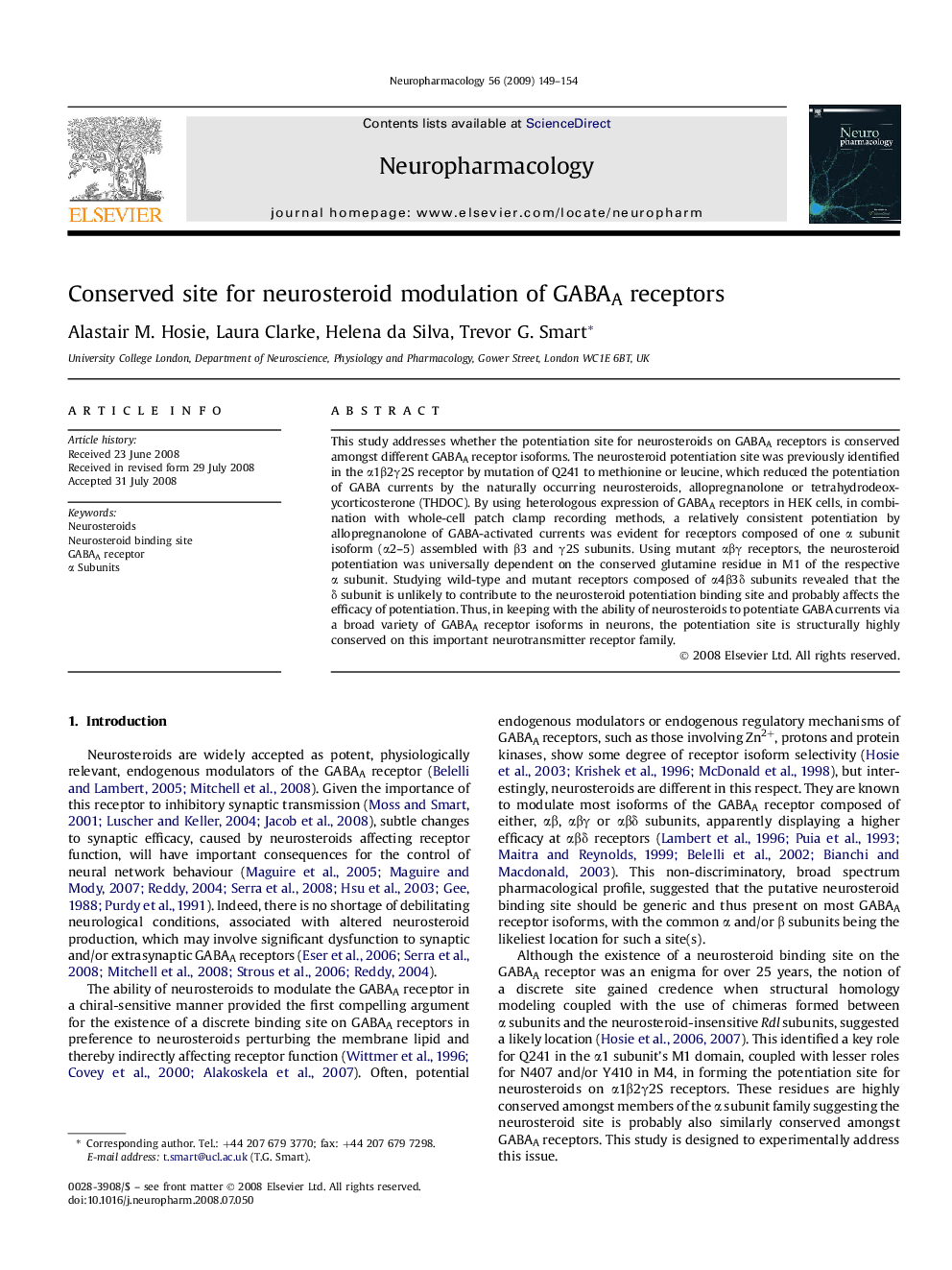| Article ID | Journal | Published Year | Pages | File Type |
|---|---|---|---|---|
| 5816165 | Neuropharmacology | 2009 | 6 Pages |
Abstract
This study addresses whether the potentiation site for neurosteroids on GABAA receptors is conserved amongst different GABAA receptor isoforms. The neurosteroid potentiation site was previously identified in the α1β2γ2S receptor by mutation of Q241 to methionine or leucine, which reduced the potentiation of GABA currents by the naturally occurring neurosteroids, allopregnanolone or tetrahydrodeoxycorticosterone (THDOC). By using heterologous expression of GABAA receptors in HEK cells, in combination with whole-cell patch clamp recording methods, a relatively consistent potentiation by allopregnanolone of GABA-activated currents was evident for receptors composed of one α subunit isoform (α2-5) assembled with β3 and γ2S subunits. Using mutant αβγ receptors, the neurosteroid potentiation was universally dependent on the conserved glutamine residue in M1 of the respective α subunit. Studying wild-type and mutant receptors composed of α4β3δ subunits revealed that the δ subunit is unlikely to contribute to the neurosteroid potentiation binding site and probably affects the efficacy of potentiation. Thus, in keeping with the ability of neurosteroids to potentiate GABA currents via a broad variety of GABAA receptor isoforms in neurons, the potentiation site is structurally highly conserved on this important neurotransmitter receptor family.
Keywords
Related Topics
Life Sciences
Neuroscience
Behavioral Neuroscience
Authors
Alastair M. Hosie, Laura Clarke, Helena da Silva, Trevor G. Smart,
